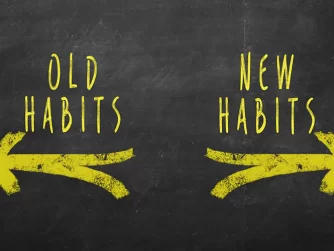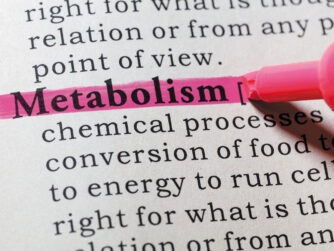Let’s Talk About Pre-Diabetes—Before It’s Too Late
Hey there, it’s Coach Chris—your certified personal trainer and nutritionist—and today, we’re going to have a real, honest conversation about pre-diabetes. It’s more common than most people realize, and here’s the kicker: many people have it and don’t even know it.
We’re going to break down what you might be doing—without even realizing—that’s moving you closer to pre-diabetes. We’ll talk about the role of age, diet, exercise, and simple things you can do to turn it all around. This isn’t about guilt or shame. It’s about taking control before it’s too late.
What Is Pre-Diabetes?
Let’s keep this simple. Pre-diabetes means your blood sugar levels are higher than normal, but not high enough to be classified as type 2 diabetes—yet. It’s your body saying, “Hey, something’s not working right. Pay attention!”
According to the CDC, more than 1 in 3 American adults has pre-diabetes. That’s over 96 million people. What’s worse? Over 80% of them don’t know it.
What Are We Doing That Causes Pre-Diabetes?
1. We’re Eating Too Many Refined Carbs and Sugars
Let’s be honest—many of us are living off highly processed foods. Bagels, pasta, white bread, sugary cereals, soda, donuts, flavored lattes… it all adds up.
When we eat these kinds of foods regularly, our body gets flooded with glucose (sugar). In response, the pancreas pumps out insulin, a hormone that helps shuttle sugar into cells. Over time, cells stop responding properly. That’s called insulin resistance—and it’s the doorway to pre-diabetes.
Better Choice:
Swap white bread for whole grain. Choose fruit over candy. Cook at home more often and cut back on liquid sugar (sodas, sweet teas, even fruit juices).
2. We’re Sitting Too Much
Whether it’s at a desk, in a car, or on the couch, most of us sit way too much. Lack of movement makes it harder for your muscles to absorb and use blood sugar effectively. That sugar ends up staying in your bloodstream, raising your risk.
Does exercise matter? Absolutely. Even light movement improves blood sugar control. You don’t need to live in the gym—just start moving more than you’re sitting.
Better Choice:
Take 10-minute walks after meals. Stand up and stretch every hour. Park farther away. Try bodyweight exercises at home. Movement matters more than perfection.
3. We’re Ignoring Our Weight—Especially Belly Fat
Excess fat around the midsection is a major red flag for insulin resistance. Visceral fat (the kind that surrounds your organs) is especially dangerous and directly tied to metabolic problems.
This isn’t about body-shaming—it’s about being aware. If you’ve noticed your clothes getting tighter around the waist or you’ve gained weight over the years, it’s time to pay attention.
Better Choice:
Focus on strength training, whole foods, and portion control. You don’t need to be shredded—but lowering body fat and building muscle goes a long way in restoring insulin sensitivity.
4. We’re Not Managing Stress or Sleep
Chronic stress raises cortisol, which can increase blood sugar. Poor sleep does the same thing. The body interprets both as danger—and responds by pumping out more glucose for “fuel.”
In the short term, this isn’t a big deal. But when you’re always stressed or consistently sleeping less than 6–7 hours? That’s a problem.
Better Choice:
Set a consistent bedtime. Use breathing techniques. Say no to things that drain you. Take short breaks. A calm, rested body handles blood sugar much better.
5. We Think Age Is a Sentence—It’s Not
Now, let’s address the age question. Does age matter? Yes—but not like you might think.
As we age, our metabolism naturally slows a bit. Muscle mass decreases (especially if we’re inactive), and insulin sensitivity can drop. But age doesn’t cause pre-diabetes—lifestyle does.
I’ve worked with people in their 50s and 60s who turned their numbers around completely. Age is a factor, but it’s not the cause. Don’t blame the birthday candles—look at the habits.
What You Can Start Doing Today
The good news? Pre-diabetes is reversible in most cases. It just takes consistent action and a willingness to shift your routine.
Here are some starter steps:
- Get moving: Aim for 150 minutes of movement per week. That’s just 30 minutes, 5 days a week. Walking counts!
- Eat real food: More fiber, protein, healthy fats. Less sugar and refined carbs.
- Strength train: Lifting weights or bodyweight resistance helps build muscle, which soaks up excess sugar like a sponge.
- Prioritize sleep: 7–9 hours per night. No excuses.
- Reduce stress: Meditation, prayer, journaling, or just more time outside.
- Get tested: Ask your doctor about an A1C test or fasting glucose. It’s a simple blood test that gives you real data.
Real Talk: Why It Matters
Pre-diabetes doesn’t just lead to diabetes. It increases your risk of heart disease, stroke, nerve damage, vision problems, and even certain cancers.
But if you catch it early and start making changes, you can prevent all of that.
This isn’t about a diet or a 30-day challenge. This is about reclaiming your health, energy, and future. It’s about showing your family what real health looks like. It’s about having the stamina to travel, play, and live without limits.
Final Thoughts
If you’re over 40 and feeling a little off—or even if you feel fine—now is the time to ask yourself:
- Am I moving enough?
- Am I eating mostly whole, real foods?
- Am I sleeping and managing stress?
- Is my waistline creeping up?
- When’s the last time I had my blood sugar checked?
If you answered “no” or “I’m not sure” to any of these—don’t panic. Just start. Even small changes make a big impact.
You don’t have to be perfect—you just have to be aware and willing. Pre-diabetes is a warning sign, not a life sentence. Use it as your motivation to take your power back.







